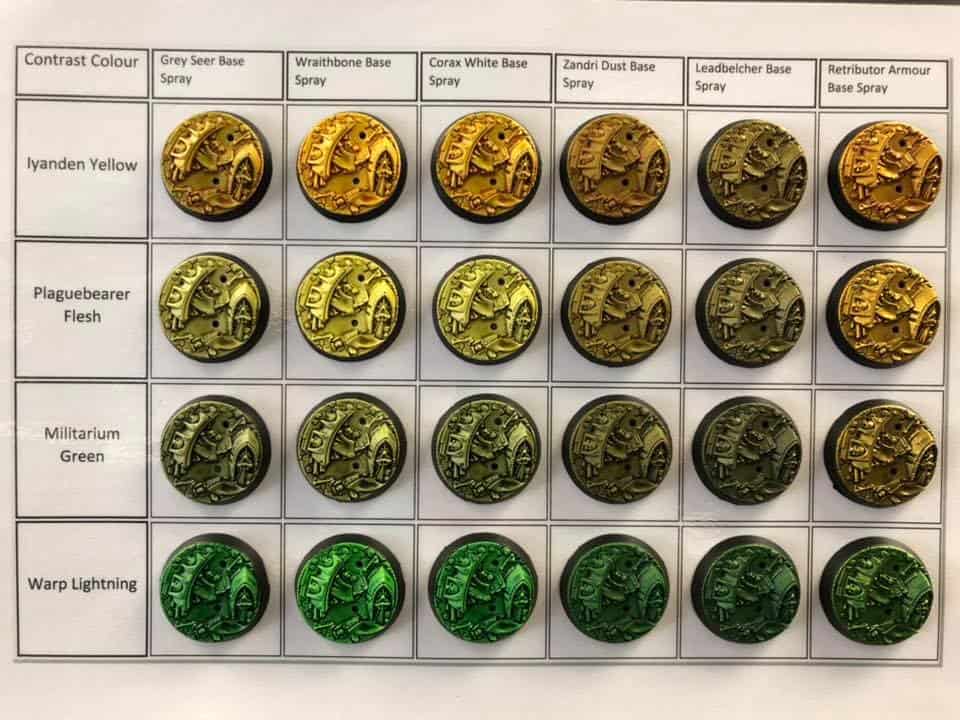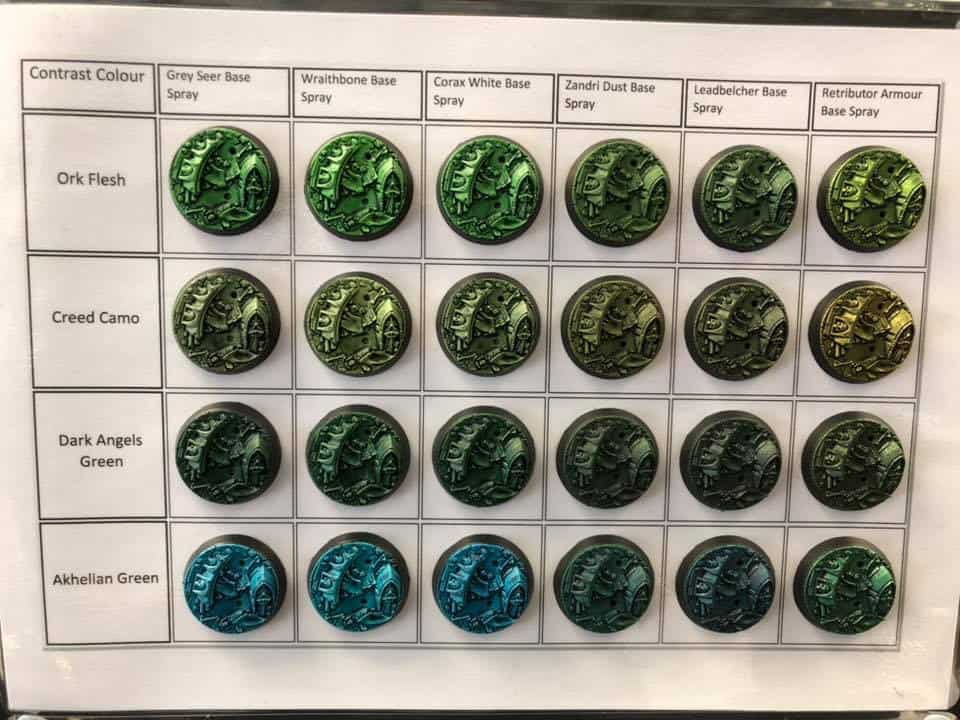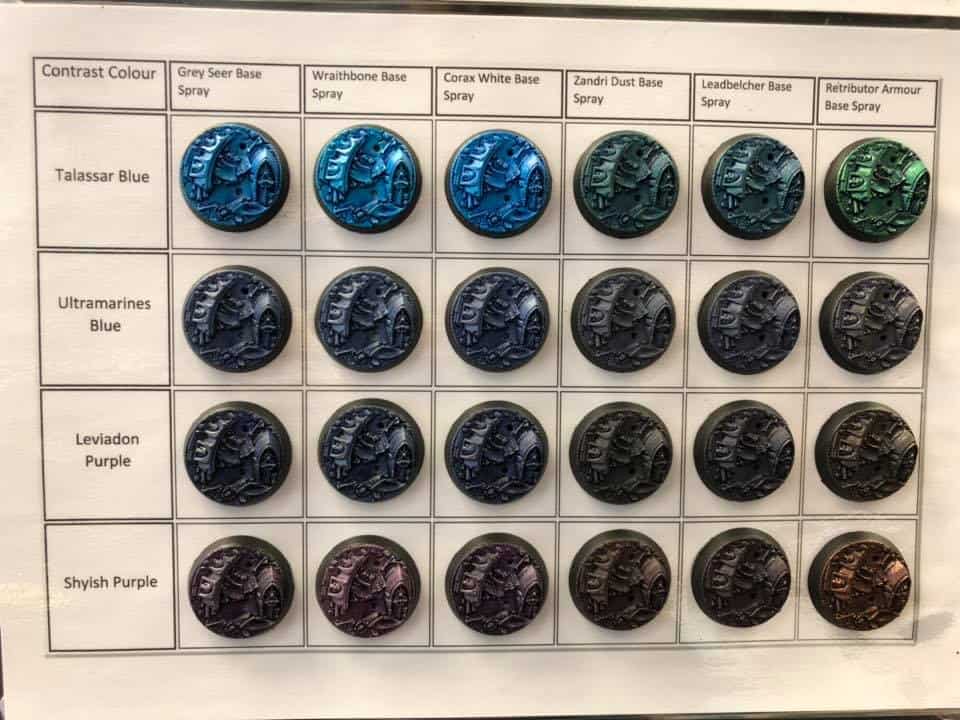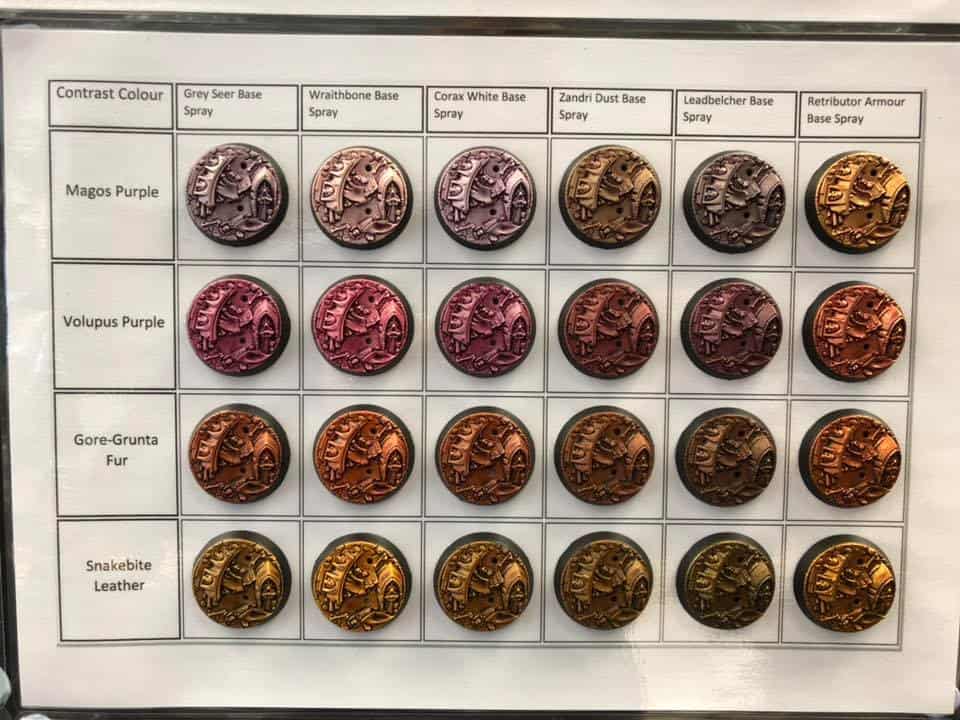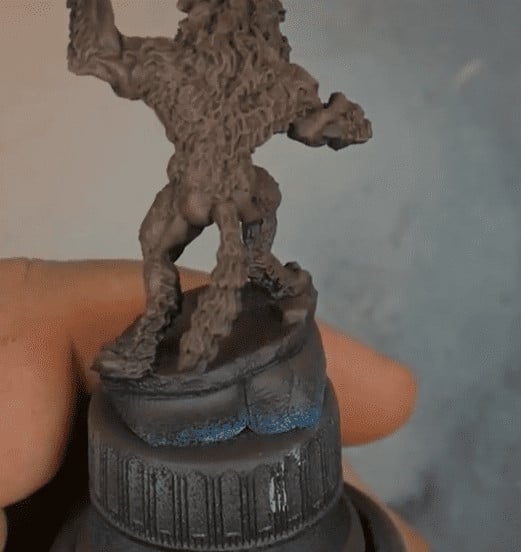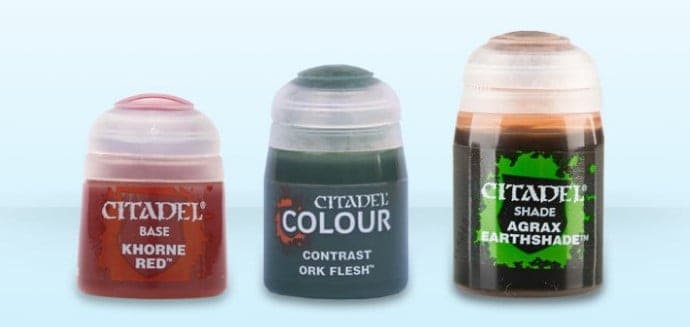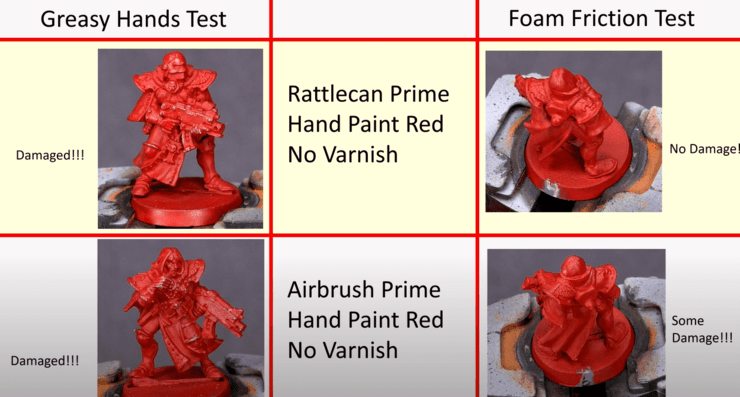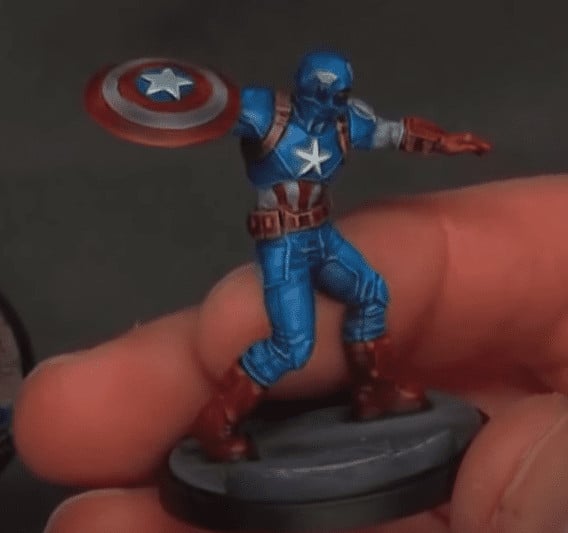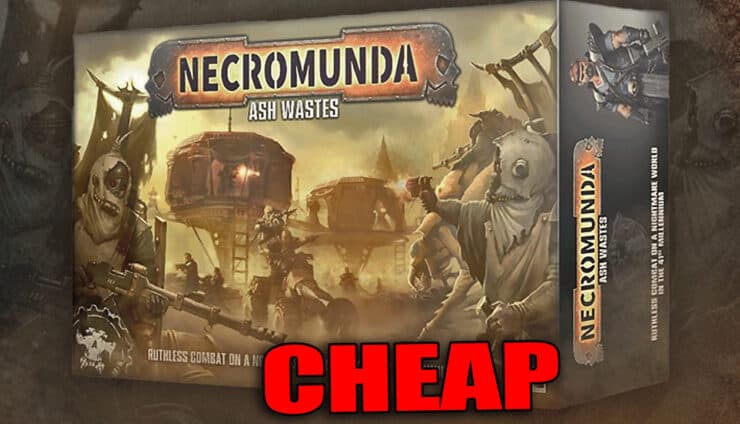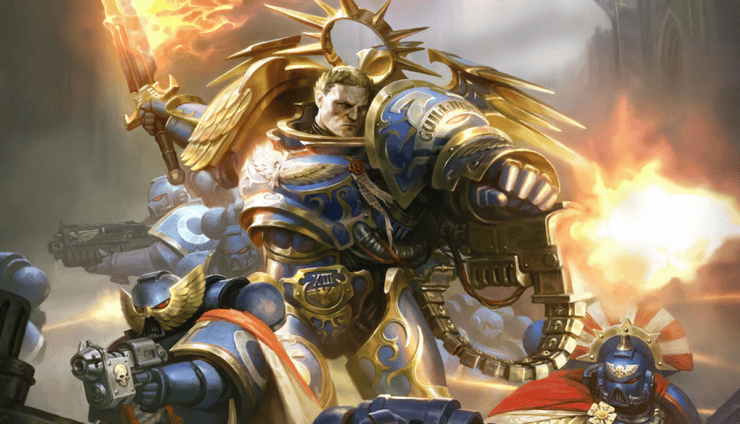Citadel contrast paints and their alternatives can make painting your army super fast, but they have a learning curve like anything!
If you’re looking to elevate your miniature painting game, understanding how to make the most of Citadel Contrast Paints and exploring their alternatives is vital. In this guide, we’ll jump into the world of contrast paints, providing an ultimate overview of their features, benefits, and techniques.
Additionally, we’ll explore some of the best alternatives on the market, allowing you to make an informed decision and achieve great results (and maybe not spend too many hobby dollars).
The Ultimate Guide to Citadel Contrast Paints & Their Best Alternatives
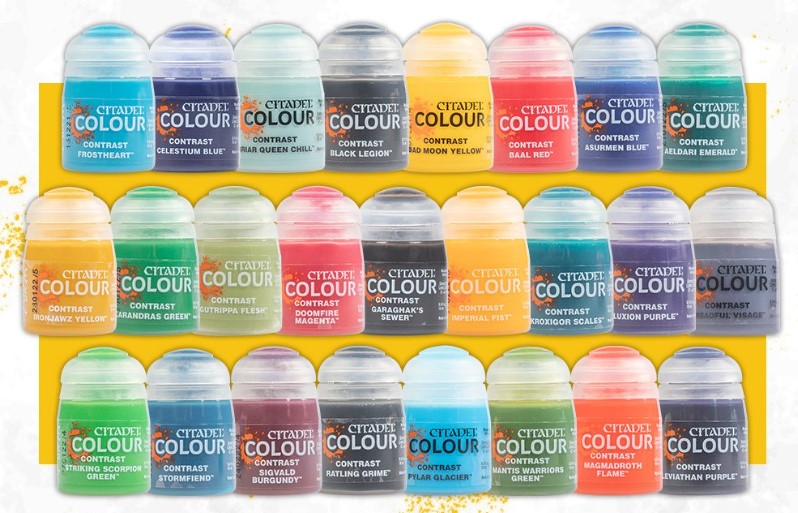
- Introduction to Citadel Contrast Paints
- How to Use Citadel Contrast Paints
- Advanced Techniques with Contrast Paints
- Exploring Alternatives to Citadel Contrast Paints
- How Much Does Contrast Paint & Alternatives Cost
- Contrast Paints in Action
- Pros and Cons of Contrast Paints
- Tips for Getting the Best Results
- Real-World Examples and Tutorials
- FAQs about Contrast Paints
- Conclusion
Introduction to Citadel Contrast Paints
What are Contrast Paints?
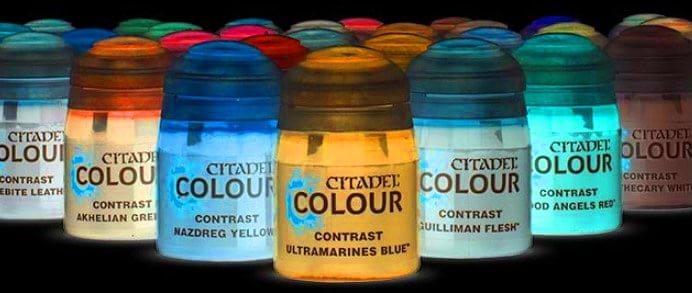
These magical concoctions are designed to make your painting journey smoother and more enjoyable, whether you’re a newbie or a seasoned pro. But what exactly are these paints, and why is everyone raving about them?
Contrast paints are a type of acrylic paint with a twist. They’re formulated to create both a base color and shading in one go. This means you can slap a single coat of paint onto your miniature, and voila!
You’ve got a beautifully shaded and highlighted model without the need for multiple layers and painstaking detail work (obviously, you can always go further for more detail, but it’s an amazing start). Think of them as the superhero of paints, swooping in to save the day (and your sanity).
The History of Citadel Contrast Paints

When they hit the market, it was like the second coming of sliced bread for miniature painters. People were ecstatic, and for good reason. The ability to achieve professional-looking results with minimal effort was a game-changer.
Suddenly, the hobby was more accessible, and the barrier to entry was significantly lowered. Contrast Paints didn’t just create a splash; they caused a tidal wave in the miniature painting community.
Get the Supplies to Transfer Your Contrast Paints to Dropper Bottles:
- 15ml Dropper Bottles
- 30ml Dropper Bottles (for Contrast and 18ml large pots)
- Vallejo Flow Improver
- The Army Painter Mixing Balls
Why Use Contrast Paints?
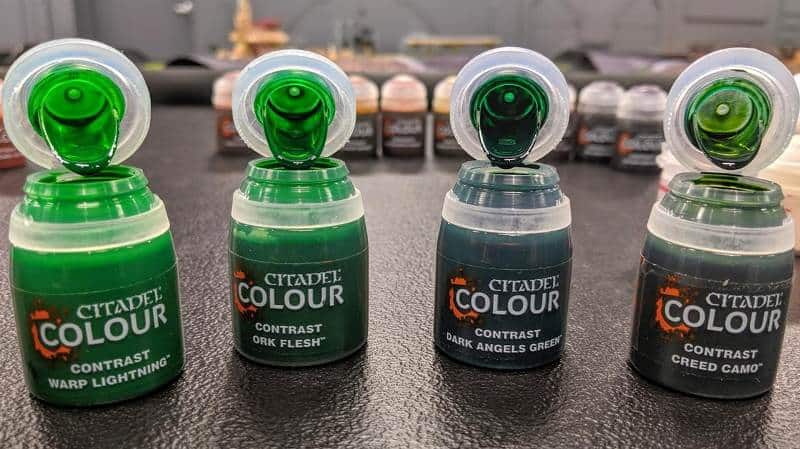
Contrast Paints cut down this process to just one or two steps. This efficiency is a godsend, especially when you’re working on large armies for games like Warhammer 40K or Age of Sigmar.
Second, they’re incredibly user-friendly. If you’re just starting out, the learning curve for traditional painting can be steep. Contrast Paints simplify this, allowing you to achieve impressive results without years of practice. They’re like the training wheels of miniature painting, giving you the confidence to dive into the hobby headfirst.
Finally, they’re versatile. Contrast Paints adapt to your needs, whether you’re painting intricate details or broad surfaces. They pool in the recesses and pull away from the edges, creating natural shadows and highlights. This makes them perfect for textured surfaces like fur, cloth, and muscle, but they can also be manipulated to work on smoother surfaces with a bit of technique.
In summary, Citadel Contrast Paints are a fantastic addition to any painter’s toolkit. They offer time-saving convenience, ease of use, and stunning results, making them a worthy investment for both beginners and experienced painters alike. So, grab your brushes and get ready to transform your miniatures with the power of Contrast Paints.
How to Use Citadel Contrast Paints
Choosing the Right Basecoat
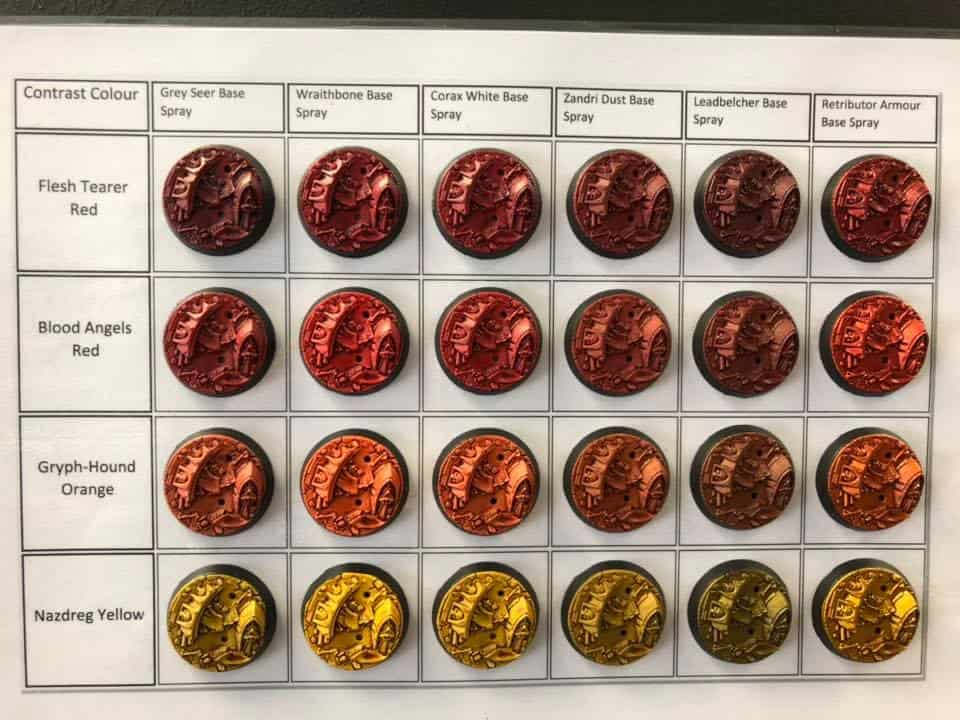
Obviously, Grey Seer is the more grey primer, Wraithbone is a bright tan, and Corax White is the purest white you’ll find among the paints.
You can see that, generally speaking, the Grey Seer primer puts out a darker hue, while Corax White has the most vibrant and bright color. Of course, that leaves Wraithbone in the middle of the road.
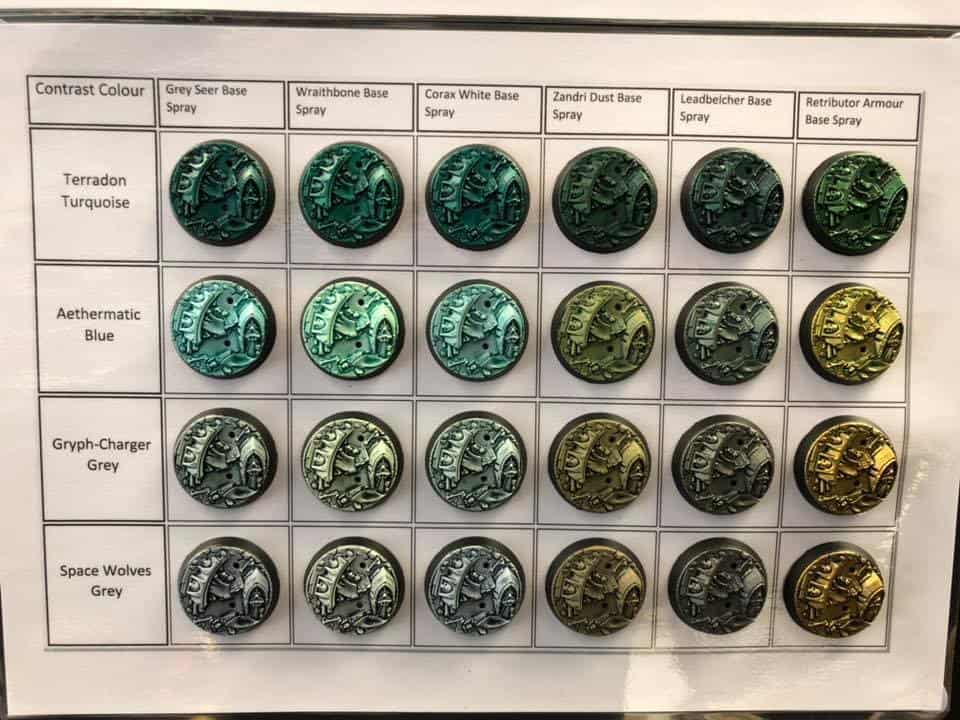
Imagine trying to paint a rainbow on a blackboard – not the best idea, right? The same principle applies here. Contrast Paints work their magic over light colors, giving you those vibrant, eye-popping hues.
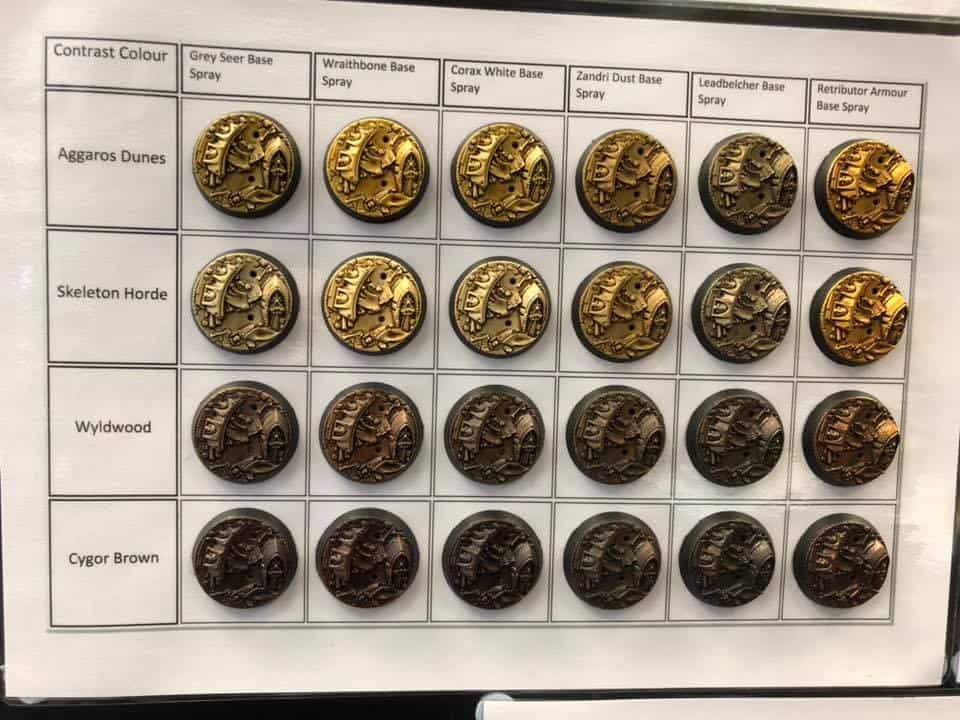
Hopefully, this side-by-side comparison of primers and the Citadel Contrast paints has helped you decide which primer you should go with and maybe what Contrast paint would look best for your minis!
Applying Contrast Paints
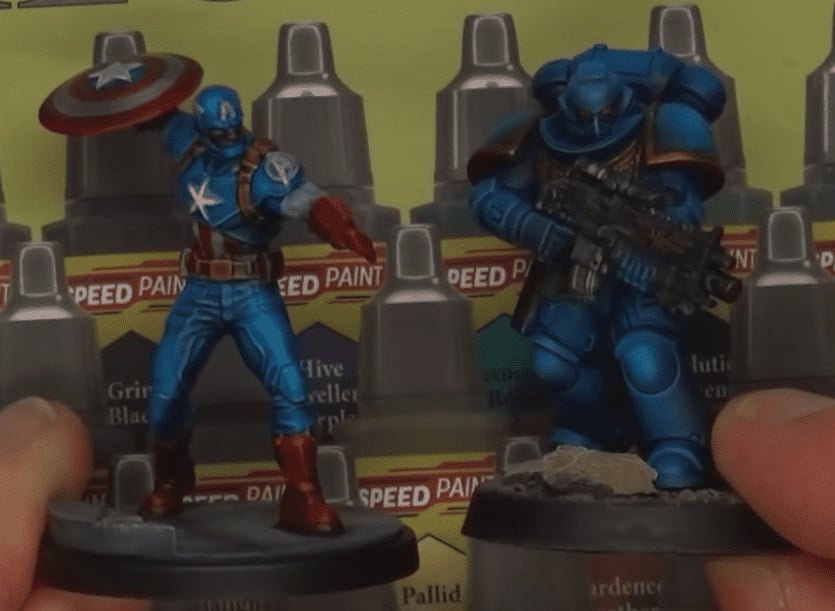
The key here is to apply the paint generously but not excessively. You want it to flow into all the nooks and crannies of your miniature, creating natural shadows and highlights.
Think of it like spreading jam on a piece of toast—you want nice, even coverage, but you don’t want it dripping off the edges. Start with the larger areas and work your way to the smaller details.
If you’re painting a model with lots of textures, like fur or scales, you’re in for a treat. The paint will do most of the work for you, pooling in the recesses and highlighting the raised areas.
Common Mistakes and How to Avoid Them
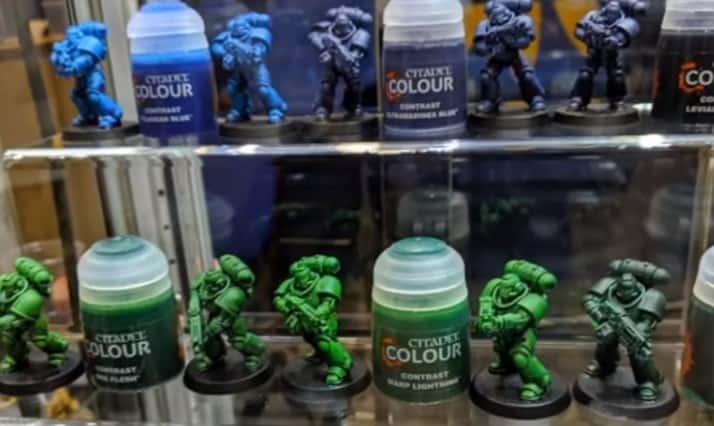
- Mistake #1: Too Much Paint It’s tempting to slather on a thick coat of paint but resist the urge. Too much paint can pool excessively in recesses, obscuring details and creating a blotchy look. Instead, apply thin layers and build up if necessary. Remember, you can always add more, but taking away excess paint is a hassle.
- Mistake #2: Dark Basecoats We’ve mentioned this before, but it bears repeating – dark basecoats are a no-go with Contrast Paints. They’ll just make your colors look dull and lifeless. Stick to white or bright basecoats for the best results.
- Mistake #3: Not Letting Paint Dry Patience is a virtue, especially when it comes to painting miniatures. Let each layer of paint dry thoroughly before moving on to the next. This will prevent smudging and ensure crisp, clean lines.
- Mistake #4: Overworking the Paint Once you’ve applied the paint, let it do its thing. Overworking the paint can lead to streaks and uneven coverage. Apply it and let it settle naturally into the recesses and highlights.
By keeping these tips in mind, you’ll be well on your way to mastering the art of Contrast Paints. They’re a fantastic tool for achieving stunning results with minimal effort, and with a bit of practice, you’ll be churning out beautifully painted miniatures in no time. Now, let’s move on to some advanced techniques to really make your models pop.
Advanced Techniques with Contrast Paints
Creating Depth and Highlights
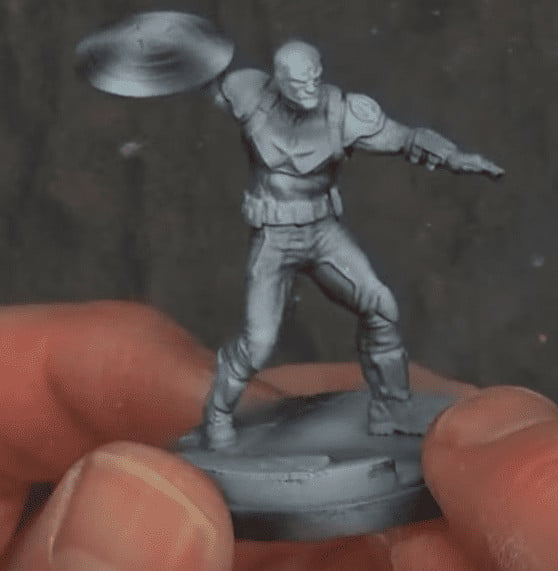
Now, it’s time to level up your game and delve into some advanced techniques. Let’s start with creating depth and highlights because who doesn’t love a miniature that looks like it’s ready to leap off the tabletop?
Contrast Paints are fantastic for creating natural shadows and highlights, but you can take this a step further with a technique called zenithal highlighting. Sounds fancy, right? Don’t worry; it’s simpler than it sounds.
Basically, you spray your model with a black basecoat, then give it a light spray of white paint from above. This creates a gradient from dark to light, mimicking the way light naturally falls on objects.
Once your zenithal highlight is in place, apply your Contrast Paints as usual. The paint will flow into the recesses, enhancing the shadows and highlights created by your basecoat.
The result? A miniature with dynamic depth and striking highlights that look like you’ve spent hours painstakingly layering colors.
Using Contrast Paints on Different Textures
Now, let’s talk textures. Miniatures come in all shapes and sizes, with a variety of textures that can be a joy (or a nightmare) to paint. Contrast Paints excel on textured surfaces, so let’s dive into how you can make the most of them.
Contrast Paints are your best friend for textures like fur, cloth, or scales. The paint naturally pools in the recesses, creating shadows while pulling away from raised areas to create highlights. It’s almost like magic – or at least, as close to magic as you’ll get in the miniature painting world.
When painting fur, for example, start with a light basecoat, then apply your Contrast Paint. Watch as the paint does its thing, settling into the recesses and bringing out the texture.
For cloth, you can achieve beautiful folds and creases with minimal effort. And for scales? Well, you’ll be the envy of your gaming group with those lifelike, shimmering scales.
Smooth surfaces, like armor plates, require a bit more finesse. Apply a thin, even layer of Contrast Paint, and let it dry completely before deciding if it needs another coat. You can also combine Contrast Paints with traditional acrylics to add additional highlights and shading, giving you more control over the final look.
Incorporating Metallics with Contrast Paints

Let’s talk shiny stuff – metallics! Incorporating metallics with contrast paints can create truly eye-catching effects. Whether you’re painting knights in shining armor or futuristic soldiers, this technique can add a whole new dimension to your miniatures.
Start with a metallic basecoat, like silver or gold. Then, apply your chosen Contrast Paint over the top.
For instance, if you want to give your Chaos Space Marines a vibrant metallic blue-green hue, start with a Boltgun Metal base, drybrush with bright silver, and then apply a teal Contrast Paint like Aethermatic Blue. The result is a stunning, shimmering effect that makes your miniatures stand out.
For those looking to recreate the luxurious “candy red” effect on vehicles, start with a gold basecoat like Retributor Gold. Once dry, apply a red Contrast Paint like Baal Red. The end result is a deep, rich metallic red that looks like it belongs on a vintage sports car. Fancy!
Remember, Contrast Paints are translucent, so they’ll let the metallic basecoat shine through while adding a layer of color. This technique is perfect for adding a touch of elegance and flair to your models, making them the centerpiece of any collection.
Now that you’ve got these advanced techniques, you’re ready to take your painting skills to the next level. Whether you’re creating dynamic depth, enhancing textures, or adding metallics, these tips will help you achieve stunning results with ease. Next up, let’s explore some fantastic alternatives to Citadel Contrast Paints that can offer even more creative possibilities.
Now that you’ve seen the price, we’ll discuss the alternatives and their uses and include all the prices.
Exploring Alternatives to Citadel Contrast Paints
Army Painter Speedpaint
Get yours from these retailers:|Army Painter|Amazon | Dicehead Games | Bazooka Games | Frontline Gaming |
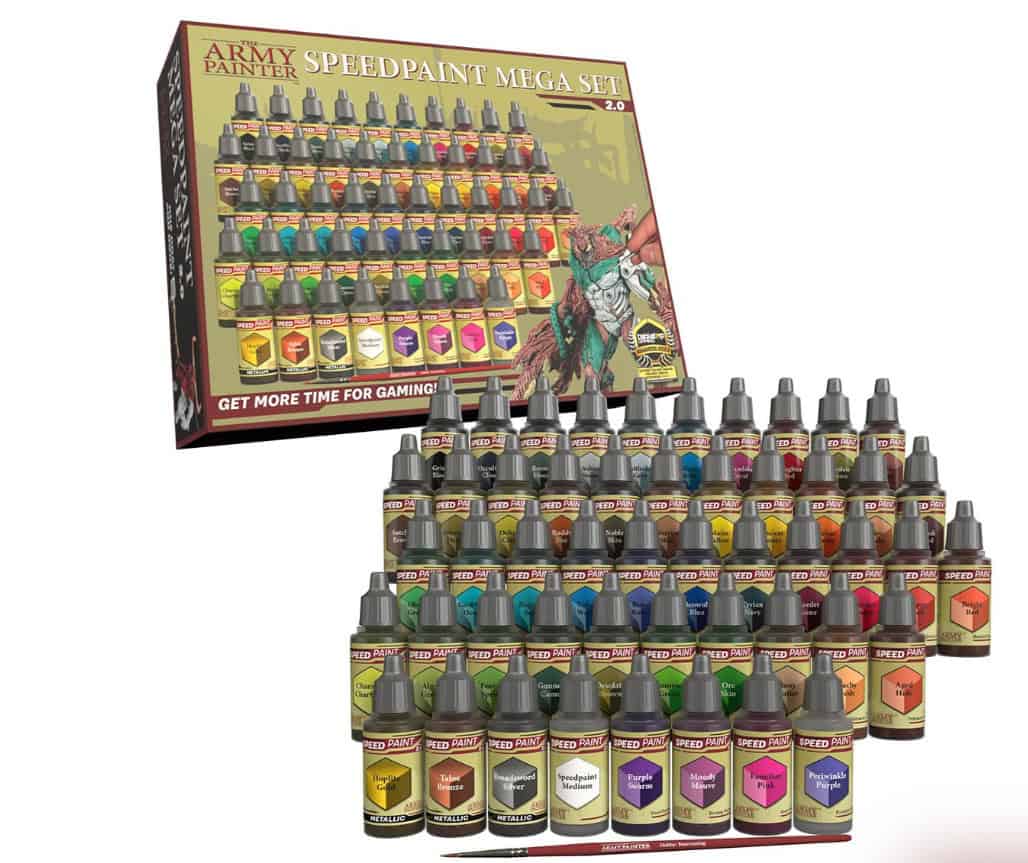
If Contrast Paints are the superheroes of the paint world, and Speedpaints are their trusty sidekicks. These paints are designed to be quick and easy, helping you churn out painted miniatures faster than you can say “Citadel.”
Speedpaints offer vibrant colors and smooth application, making them perfect for both beginners and veterans. The process is similar to using Contrast Paints – just apply them over a bright basecoat and watch the magic happen.
They’re particularly good at covering large areas quickly, so if you’re working on a horde of goblins or a regiment of soldiers, Speedpaints will save you a ton of time.
One of the highlights of Speedpaints is their consistency. They flow nicely into recesses and provide even coverage on raised surfaces. And because they dry relatively quickly, you can move on to the next step of your project without much downtime.
Cuttlefish Colors
Get Your Cuttlefish Colors here!

Inspired by the Sketch and Glaze technique – a favorite among award-winning miniature painters for the last 30 years (or 300 years if we’re talking traditional canvas artists) – these paints make it a breeze for newbies to create jaw-dropping results.
All you need is a bit of patience and a dash of basic painting know-how. For the seasoned painters out there, you’re gonna love how these pre-glazed wonders save you time and hassle; no extra mediums are needed. Dive in and watch your miniatures come to life!
Green Stuff World Dipping Ink
Click Here to Get Your Dipping Inks!
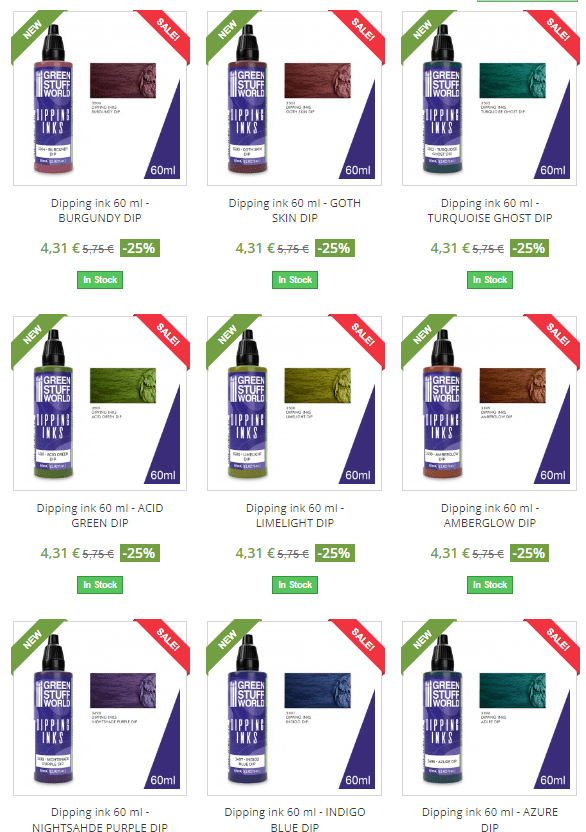
Think of them as the drama queens of the painting world – always ready to steal the show with their bold contrasts. The application process is pretty straightforward. Slap these inks onto your miniatures and watch them work their magic.
They’re particularly great for textures like bones, fur, and skin – anywhere you want that pronounced contrast. Just remember, these inks are a bit more intense than your average contrast paint, so use them where you want that extra pop.
However, they do have a bit of a learning curve. Too much ink can overwhelm your model, so practice makes perfect. And if you’ve got fond memories of old-school shades like Devlan Mud or Badab Black, you’ll find these inks bring a nostalgic flair to your painting.
Scale 75
Click Here to Get Your Scale 75 Paints!
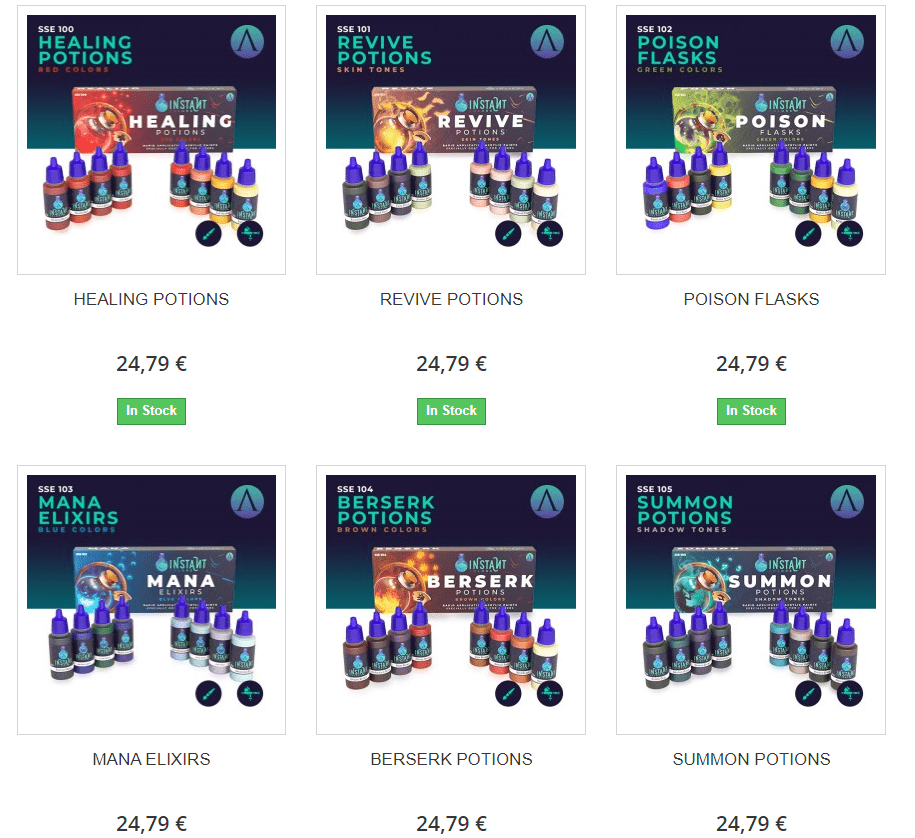
This range boasts 48 stunning matte colors that are as versatile as they are vibrant. Whether you prefer the classic feel of a paintbrush or the sleek efficiency of an airbrush, these paints have got you covered.
Imagine effortlessly blending shades and bringing your miniatures to life with depth and dimension that’ll make your gaming buddies do a double-take. With Instant Colors, you’ll not only save time but also elevate your painting game to legendary status!
Vallejo Xpress Paint
Click Here to Get Your Xpress Paints!
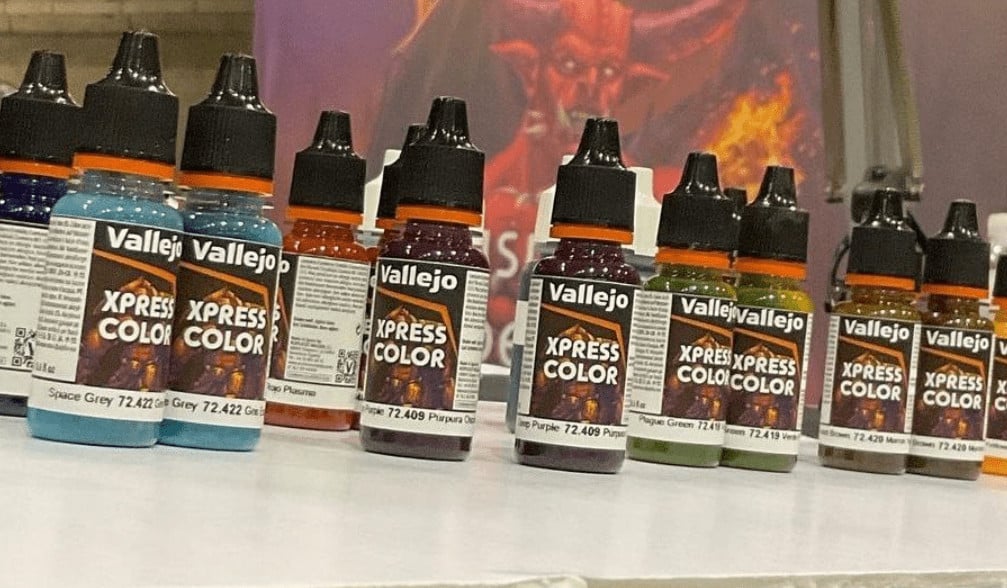
Xpress Paints offers a smooth application and vibrant colors like their Citadel counterparts. They’re great for creating that contrast effect we all love but with a unique twist.
Vallejo’s formulation tends to be a bit more fluid, allowing for more controlled application and finer details. One of the standout features of Xpress Paints is their versatility.
They work well on various surfaces, from textured fur to smooth armor plates. Plus, they play nicely with other Vallejo products, so you can mix and match to your heart’s content.
Experimenting with Xpress Paints can lead to some exciting results. Whether you want to achieve smooth gradients, sharp contrasts, or vibrant colors, these paints are up to the task. And with Vallejo’s reputation for quality, you can trust that your miniatures will look fantastic.
In conclusion, while Citadel Contrast Paints are fantastic, plenty of alternatives offer unique benefits and creative possibilities.
Green Stuff World Dipping Inks, Army Painter Speedpaints, Cuttlefish Colors, Scale 75, and Vallejo Xpress Paints each bring something special to the table, allowing you to explore new techniques and effects. So go ahead, mix things up, and see where your painting adventures take you!
How Much Does Contrast Paint Cost Compared to Alternatives
Contrast paints retail for $7.80 per 18 ml pot, and because they are between a layer and a wash in consistency, the paint will probably go fairly quickly. If you plan on painting your little rank-and-file guys in your army, it may be a good idea to grab a few bottles of the same color. However, let’s look at the alternative prices as well.
- Citadel Contrast Paint: 18ml pot for $7.80
- Vallejo Paint: 17ml dropper bottle for $4.99 for Xpress Paint
- Cuttlefish Colors: 22ml dropper bottle for about $4.65
- Army Painter Paint: 18ml dropper bottle for $4.99
- Scale 75 Paint: 17ml dropper bottle for (about) $3.50
Next, let’s see how these paints perform in action with practical examples.
Contrast Paints in Action
Speed Painting Armies
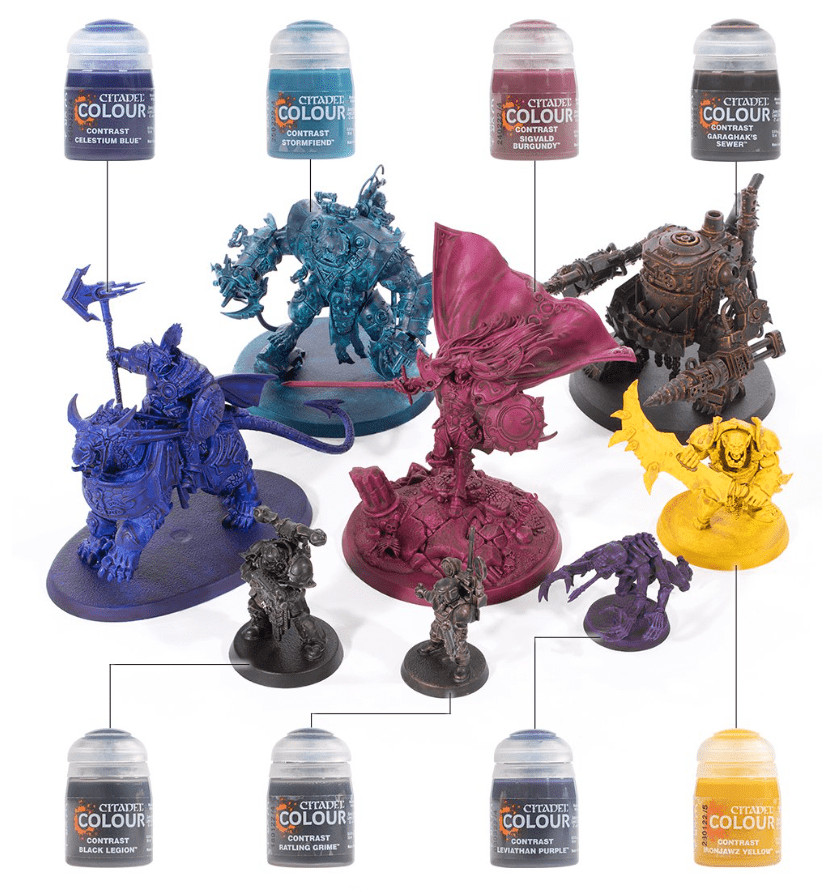
We’ve all been there – staring down a horde of unpainted miniatures and feeling a sense of impending doom. Fear not, our friend, because Contrast Paints are here to save the day.
Contrast Paints are a godsend when it comes to speed painting. Their unique formulation allows you to paint large batches of miniatures quickly without sacrificing quality. Start with a white or light grey basecoat – this is your blank canvas. Then, pick a color and start applying it generously.
The paint will flow into the recesses, creating natural shadows while leaving the raised areas highlighted. It’s like painting in Fast Forward.
For example, if you’re painting an army of Space Marines, you can get an entire squad done quickly. Basecoat them with a white primer, then apply a blue Contrast Paint like Ultramarines Blue.
The paint will do most of the work for you, creating depth and highlights with minimal effort. Add a few details with traditional paints, and you’re ready. You’ll have a fully painted army ready for battle in a fraction of the time it would take using traditional methods.
Detailing Individual Miniatures
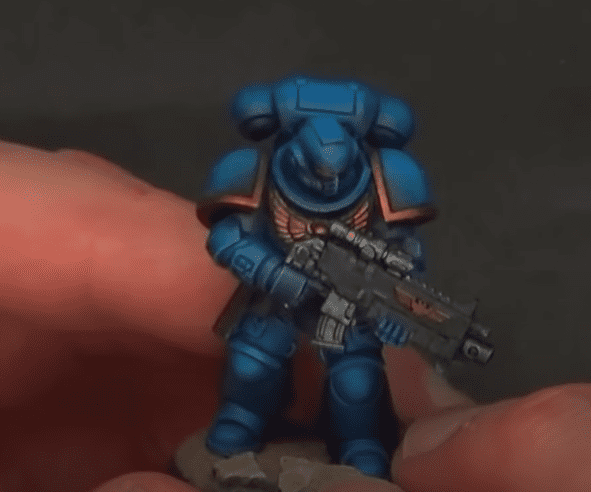
Whether you’re working on a character model or a centerpiece for your collection, Contrast Paints can help you achieve stunning results. Take, for example, a Goliath ganger from Necromunda.
Start with a white basecoat and apply a flesh-toned Contrast Paint like Guilliman Flesh. The paint will settle into the recesses, highlighting the muscles and creating natural shadows. For the clothing, use a darker color like Snakebite Leather. The paint will create realistic folds and creases, making the fabric look textured and worn.
One of the beauties of Contrast Paints is how they bring out the details in your miniatures with minimal effort. You can add layers of complexity by combining Contrast Paints with traditional acrylics.
For instance, metallic paint can be used for weapons and armor, and then a thin layer of contrast paint can be applied to add color and depth. This technique works wonders for creating dynamic, eye-catching models.
Underpainting Techniques
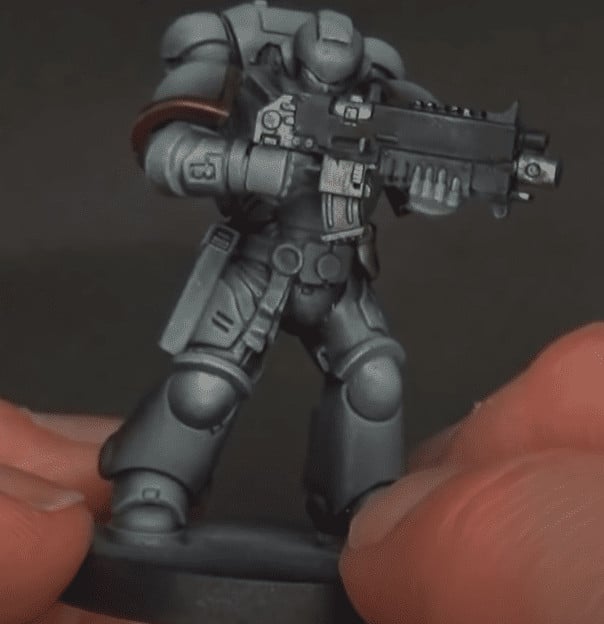
Start by priming your model black. Then, using a white spray or dry brush, highlight the areas that would naturally catch the light.
This is your underpainting – it defines the shadows and highlights before you even start applying color. Once your underpainting is complete, apply your Contrast Paints over the top.
The result is a beautifully shaded, highlighted model with rich, dynamic colors. This technique is especially effective for creating realistic skin tones, fabric textures, and complex surfaces. It requires a bit more effort upfront, but the results are well worth it.
For example, if you’re painting a barbarian with lots of exposed skin and fur, underpainting can help you achieve a natural look. Start with a black basecoat, then highlight the skin and fur with white.
Apply a flesh-tone contrast paint for the skin and brown paint for the fur. The underpainting will create depth and realism, making your model stand out.
By mastering these techniques, you’ll make the most of your Contrast Paints and alternatives, creating stunning miniatures that look like they’ve stepped out of a fantasy world. Next, let’s weigh the pros and cons of using Contrast Paints so you can decide if they’re the right choice for your painting projects.
Pros and Cons of Contrast Paints
Benefits of Using Contrast Paints
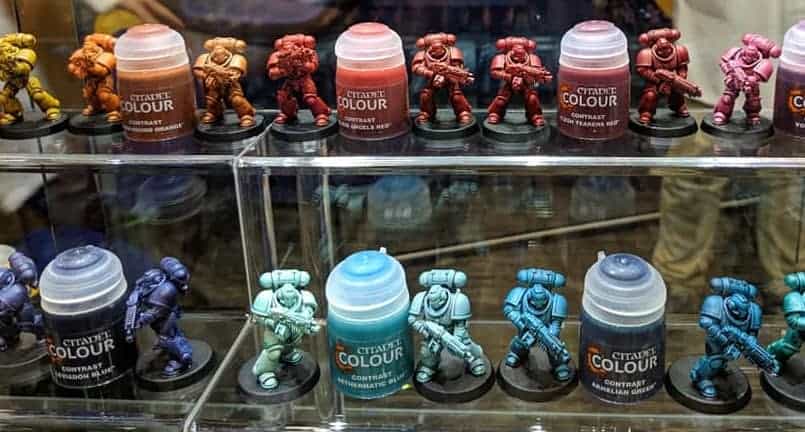
- Time-Saving Magic Contrast Paints are like a time-turner from Harry Potter – they magically save you hours of painting. By combining base colors and shading in one go, they let you churn through those endless ranks of infantry faster than you can say, “For the Emperor!” Whether you’re working on a vast horde of Orks or a sleek squad of Eldar, Contrast Paints will get you to the finish line in record time.
- User-Friendly Awesomeness These paints are the epitome of user-friendly. If you’re new to the hobby, the learning curve can be steeper than a Dwarf fortress staircase. Contrast Paints smooth things out, making it easier for beginners to achieve tabletop-ready results without tearing their hair out. Even seasoned painters can appreciate the simplicity and efficiency, especially when tackling large projects.
- Vibrant and Dynamic Colors Contrast Paints bring the party with vibrant, dynamic colors that really pop. They create natural shadows and highlights, making your miniatures look lively and full of character. No more flat, lifeless models – with Contrast Paints, every detail gets its moment in the spotlight.
Drawbacks to Consider
But, like any superhero, Contrast Paints has its kryptonite. Let’s take a look at the cons.
- Translucency Troubles Contrast Paints are translucent, which means they rely heavily on the base coat color. This can be a double-edged sword. Make a mistake, and it’s not as simple as just painting over it. You might need to reapply your basecoat and start that section over. It’s like trying to fix a typo with a typewriter – not impossible, but definitely more work.
- Smooth Surfaces Challenge While Contrast Paints excel on textured surfaces, smooth surfaces can be trickier. They don’t always play nice with large, flat areas like armor plates. You might need to employ some additional techniques to get the look you want. Think of it like trying to ice a cake with a spoon – doable, but not always ideal.
- Durability Concerns Contrast Paints don’t cure as hard as other acrylics. This means they can be more prone to wear and tear, especially on raised surfaces that get handled frequently. A protective coat of matt varnish is essential to keep your miniatures looking pristine. It’s like putting a screen protector on your phone – a little extra step that saves you a lot of heartache. However, you should always varnish your models to protect them from the harshness of playing and transporting.
Tips for Getting the Best Results
Preparing Your Miniatures
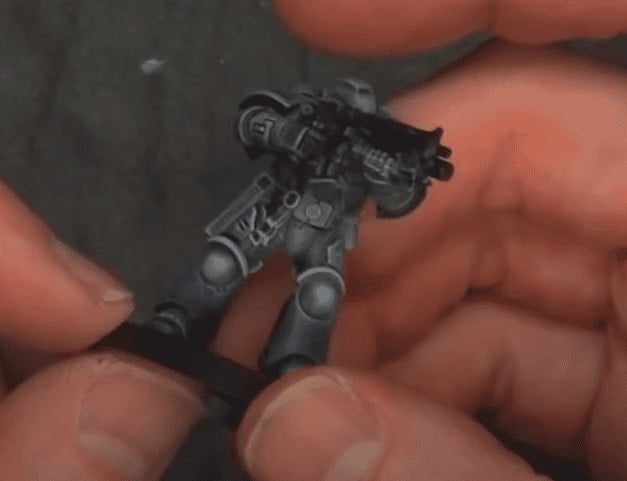
This ensures the paint adheres properly. Next, remove any mold lines or flash them with a hobby knife or file. Your miniatures should be as smooth as possible before you start painting.
Prime Time Always use a white or bright basecoat to get the best results with Contrast Paints. Citadel’s Wraithbone and Grey Seer primers are excellent choices, providing a perfect canvas for your colors to shine. Remember, darker basecoats will dull the vibrancy of your paints, so stick with light tones.
Post-Painting Care
Once your masterpiece is complete, it’s time to protect it. Contrast Paints, as mentioned, are a bit delicate, so a layer of matt varnish is a must. This not only protects the paint job but also gives your miniatures a nice, consistent finish. Think of it like sealing in the flavor after cooking – it keeps everything fresh and fabulous.
Experimenting with Different Techniques
Don’t be afraid to experiment with different techniques. Contrast Paints are versatile, and with a little creativity, you can achieve some truly unique effects. Try combining them with traditional acrylics, using them for glazing, or even using an airbrush for different effects. The sky’s the limit!
Real-World Examples & Tutorials
Step-by-Step Painting Guides

Community Creations and Inspiration The miniature painting community is filled with talented artists sharing their work online. Instagram, Reddit, and various forums are treasure troves of inspiration.
Seeing how others use Contrast Paints can spark new ideas and help you take your painting skills to the next level. So, don’t be shy – dive into the community, share your work, and get inspired!
Frequently Asked Questions About Contrast Paints
Can I Use Contrast Paints With an Airbrush?
Absolutely! While using contrast paints through an airbrush reduces some of the contrast effects, it allows for smooth, translucent layers that are perfect for colored metallics and shading large surfaces.
How Do I Fix Mistakes With Contrast Paints?
If you make a mistake, don’t panic. Reapply your basecoat to the affected area, let it dry, and then go over it again with your Contrast Paint. You can use traditional acrylics for smaller corrections.
Do I Need Special Brushes For Contrast Paints?
No special brushes are required, but a good-quality brush with a fine tip will help you control the application better, especially for detailed areas.
Conclusion
Final Thoughts on Contrast Paints
Citadel Contrast Paints and their alternatives offer a revolutionary approach to miniature painting. They simplify the process, making it more accessible for beginners while providing time-saving benefits for veterans. Their vibrant colors and unique properties make them a fantastic addition to any painter’s toolkit.
Encouragement to Experiment and Enjoy
Whether you’re just starting out or you’ve been painting for years, Contrast Paints are worth a try. Experiment with different techniques, explore various brands, and, most importantly, have fun. The miniature painting world is vast and full of possibilities – so grab your brushes and dive in! Happy painting!
Click Here to Get Your Games Workshop Citadel Contrast Paints
Do you like the Chaos factions in Warhammer 40k? Will you play any of the factions on the tabletop?
